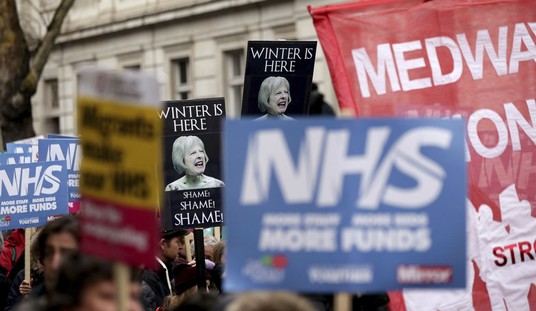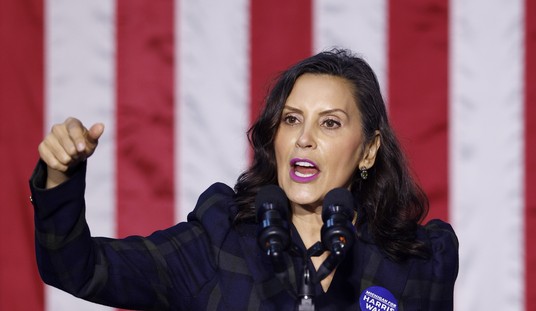Like Colby Hall and Nate Silver, I’m firmly in the “no” camp even though I spent Saturday night sleeping on the floor in a windowless hallway and will be having canned beans for dinner for, oh, the next month or so. But here’s Brendan Loy feeling a bit more equivocal:
“Was Irene overhyped? Well, yes and no. The fearful possibility of a monster hurricane hitting North Carolina, then taking an exceedingly dangerous and potentially mega-destructive track up the densely populated East Coast, was very real and fully justified as of midweek. And indeed, Irene took precisely the near-worst-case track that was being discussed, with near-worst-case tidal timing for both Chesapeake Bay and New York harbor to boot. That’s 2 out of the 3 necessary conditions to produce a mega-disaster. But all 3 must happen for the “worst case” to occur, and Irene only managed to bat .667. Worst-case scenarios generally require a bunch of bad things to happen in just the right (or rather wrong) combination; otherwise, the feared disaster, no matter how real the threat was, doesn’t come to pass. Here, Irene simply failed to ever became a true “monster” in terms of intensity, and thus her effects were vastly less severe than what they could have been. There was nothing preordained or inevitable about that failure — indeed, the meta-conditions were broadly favorable for rapid strengthening — yet it didn’t happen, demonstrating once again forecasters’ admitted lack of skill at predicting hurricane intensity (in stark contrast to the ever increasing skill, sharply on display here, at predicting hurricanes’ tracks up to 72 hours or so)…
Yet overhype certainly exists, not so much in the forecasts or the precautions, but in the media coverage. “Preparation for the worst-case scenario makes sense,” writes the Telegraph‘s Toby Harnden, “and could have saved hundreds during Katrina. But the worst-case scenario was largely portrayed as inevitable.” That’s a big problem in the early stages of hurricane coverage: the tendency to filter out the uncertainties, and treat the worst-case possibilities as probabilities or near-certainties. This, in turn, feeds into a cycle of self-perpetuating hype, which at some point seems to pass a “point of no return,” after which any walk-back of the doomsday talk is seen as irresponsibly advising people to “let their guard down” — not to mention hurting ratings. That helps cause what I view as the primary problem, which I’ve observed many times over the years: the MSM’s failure to adjust the tone and substance of the coverage once it has become apparent that the worst-case scenario(s), despite having previously been realistic possibilities, have now become unrealistic. In other words, they fail to dial down the hype a notch when the hype, once reasonable, is clearly no longer justified.
Emphases mine. He’s right that fears of this thing becoming a superstorm had faded by Friday night — I acknowledged it myself at the time — but note well his point that meteorologists have gotten good at predicting the path of hurricanes but not so good at predicting their intensity. A guy named Bill Read echoed that point today in an interview with the AP, noting that Irene never ended up forming the sort of firm eye wall that keeps truly devastating ‘canes chugging. Quote: “Why it did that, we don’t know. That’s a gap in the science.” Who’s Bill Read, you ask? Why, he’s … the director of the National Hurricane Center. Other forecasters also expressed surprise when Irene didn’t replace its eye wall after passing the Bahamas, which would have given it more power upon landfall in North Carolina. That is to say, even the most expert experts in this field can’t give you guarantees about which storms are built to go the distance and which will crack up aggressively over land; in fact, those experts can’t even tell you after the fact why a given ‘cane ended up being one or the other.
All that being so, I’m not sure why the media is now expected in hindsight to have turned on a dime on Friday night and declared that the danger of a truly devastating storm had passed and everything was now suddenly cool, more or less. This was, after all, an exceedingly rare hurricane set to make a direct hit on NYC; not even the director of the NHC could say for absolute sure how intense it would be; and there were other variables, like the tides, the new moon, and wind shear, that would affect damage and flooding in ways no one was sure of. The storm ended up speeding up as it reached the city (accelerating from roughly 14 mph to 25 mph), which reduced our exposure to it, but I’m not sure if anyone anticipated that either. Bottom line: We knew in advance that the city wouldn’t be destroyed, but beyond that no one really knew what was going to happen. How is it “hype” to say under those circumstances, “This could still be really bad”?
But if you don’t like that reasoning, read Silver’s statistical argument for why Irene didn’t garner more coverage than she deserved given how much damage she caused compared to other notorious storms. His numbers are already out of date: The death toll is now 31, which makes this the fifth-deadliest hurricane since 1980, and projections of as much as $20 billion in damage are way, way, way greater than Silver’s estimate of ~$500 million in damage from an average Category 1 hurricane or tropical storm. Irene punched far above her weight, even though NYC went mostly unscathed. In fact, one of the ironies of the “hype” storyline today is that it’s playing into the same New-York-centric mindset that contributed to the breathless coverage before the storm hit. Ace is right that this storm wouldn’t have gotten as much attention if it wasn’t set to land in the national media’s backyard, but in the end, that backyard was one of the few places that was spared. Go look at Jeff Masters’s graph of how ferocious the rain was in some areas outside NYC. New Jersey and New England got hammered, but because Battery Park didn’t get flooded, the storyline among professional media critics like Howard Kurtz today is that the storm was “hype.” I’m a lifelong New Yorker and even I’m not that myopic about the city.
Just to put a cherry on this, here’s a clip from a History Channel special on what a Category 3 could do to New York City. As of two days before she made landfall, Irene had the potential to become this. If the media took that a little too seriously, better that they erred on that side than the other way.








Join the conversation as a VIP Member